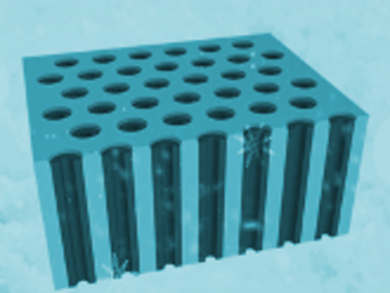Conducting polymers (CPs) such as polypyrrole are promising materials for applications in electronic and optoelectronic devices, as well as sensors. In sensing applications, nanostructured CPs improve the sensitivity of devices. However, reliable synthesis methods for conducting-polymer nanomaterials with controlled morphologies on a large scale are still needed.
Mianqi Xue, Chinese Academy of Sciences, Institute of Physics, Beijing, and colleagues have developed an easy, low-cost method to produce ordered single-crystal polypyrrole nanotube (SCPNT) arrays. The team prepared a template made of anodic aluminum oxide (AAO) on a gold support. They then used cold-wall vapor phase deposition at about 7 °C to produce polypyrrole nanotubes from pyrrole monomers (pictured). As a final step, the template was removed using a NaOH solution.
Both the template and the cold temperature cause the polypyrrole to form well-ordered structures, which improves its sensitivity for detecting gases. The researchers tested the SCPNT arrays in a gas sensor, and found an ultralow detection limit for ammonia gas, down to 0.05 ppb. The system responded quickly to changes in the gas levels, which makes it suitable for continuous monitoring of air quality. According to the team, the cold-wall template-assisted synthesis could also be applied to other materials.
- High-Oriented Polypyrrole Nanotubes for Next-Generation Gas Sensor,
Mianqi Xue, Fengwang Li, Dong Chen, Zhanhai Yang, Xiaowei Wang, Junhui Ji,
Adv. Mater. 2016.
DOI: 10.1002/adma.201602302


